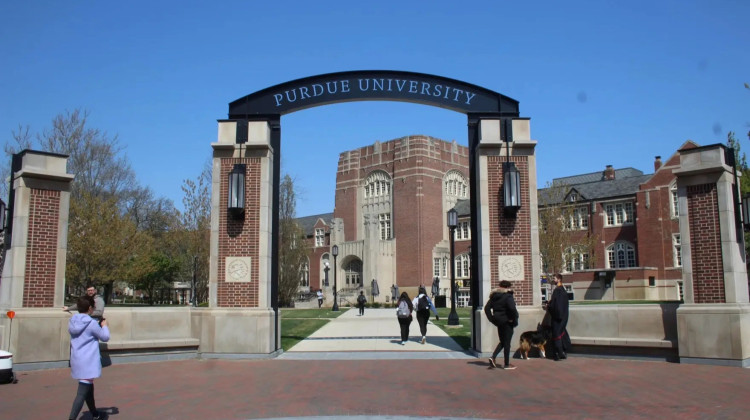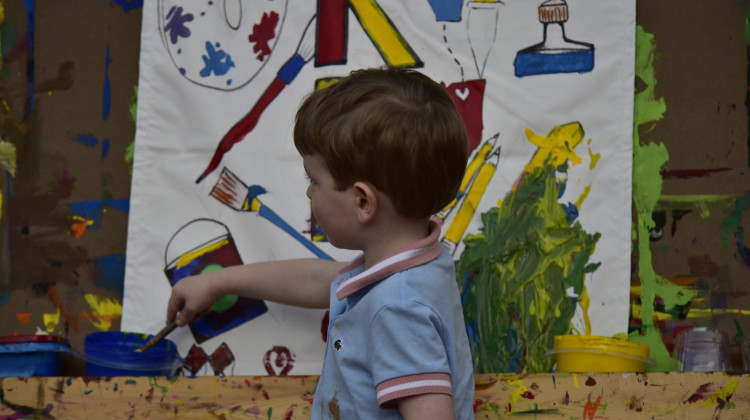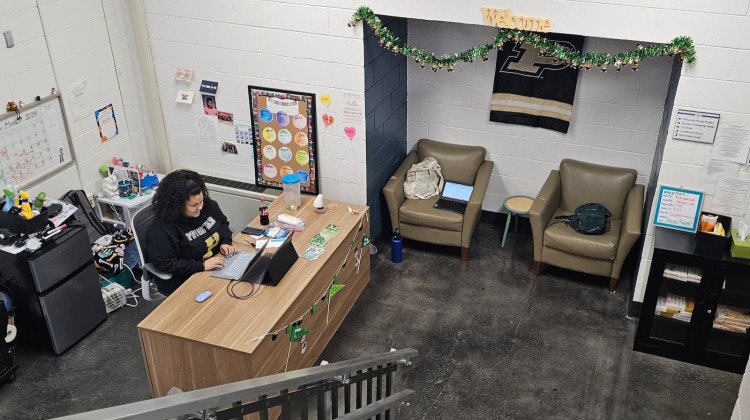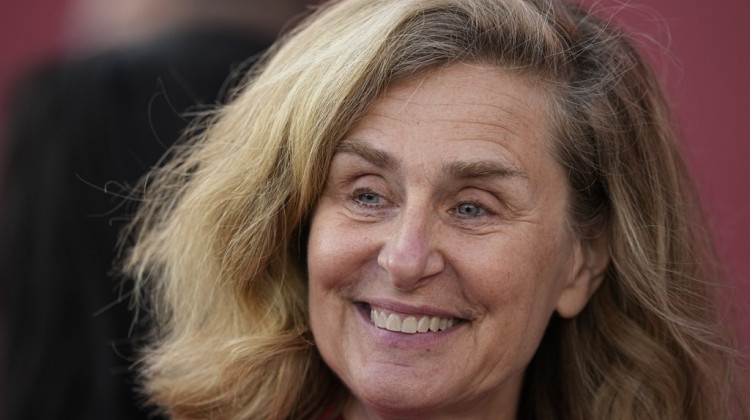
A spokesperson for Purdue University wrote in a statement simply that they would “follow the law” after the U.S. Supreme Court announced its decision to end affirmative action in college admissions on Thursday, June 29, 2023
WBAA file photoIndiana’s colleges and universities, and state leaders are reacting to the U.S. Supreme Court decision to end affirmative action in college admissions. Supporters of the practice, including the University of Notre Dame, have argued it is essential for creating a diverse student body.
In their decision, justices overturned decades of precedent that is likely to end schools' ability to consider race as one of the many factors it uses in deciding among qualified applicants.
Indiana Gov. Eric Holcomb said the law wasn’t necessary for maintaining equal opportunity and access to higher education in the state.
“It’s going to put the pressure on schools and the good ones are going to get stronger because of it and rightfully so,” he said when asked about the decision during a public event. “I would just hope that folks don’t take this as ‘I no longer have to pay attention.’ That they in fact do step up.”
But other elected officials disagreed with Holcomb’s position.
State Senate minority leader Greg Taylor (D-Indianapolis) called the decision an “erosion of progress in educational equality and racial justice.”
“Today’s decision will lead to a decrease in Black and minority individuals receiving education and career opportunities,” he said in a statement.
Reactions from Indiana’s higher education institutions noted that they were still reviewing the Supreme Court’s decision.
Indiana University officials underscored their support for exposing students to “wide ranging viewpoints and diverse backgrounds that may differ from their own.”
“In the weeks to come, we will work to understand this ruling and what may be required to ensure that IU follows the law, while also continuing to pursue the principles and values that have shaped the learning environment we seek across IU,” President Pamela Whitten and other university officials wrote.
A spokesperson for Purdue University wrote in a statement simply that they would “follow the law” on the matter.
A Ball State University spokesperson said the decision would not impact them because “race is not a factor we consider in our admissions process.”
"We consider academic performance, level of course work, extracurricular participation, and life experiences,” the spokesperson wrote. “We are committed to our enduring values, including inclusiveness—which we define as our commitment to respect and embrace equity, inclusion, and diversity in people, ideas, and opinions."
Indiana’s Commissioner for Higher Education Chris Lowery said the agency will continue to address educational attainment gaps between students of color and White students.
“We have a responsibility to not only highlight the challenges that persist but to also ensure all Hoosiers can access the opportunity education and training beyond high school can provide,” he said in a statement.
The legacy of race-based admissions
Indiana’s Black Legislative Caucus chair Rep. Earl Harris Jr. (D-East Chicago) said the Supreme Court decision “sets America back 45 years.”
“Education is the great equalizer, and without affirmative action protected by the Supreme Court, I fear we run the risk of huge decreases of African American and minority students among college populations, which will have long-lasting impacts for generations to come,” he wrote in a statement.
Affirmative action in college admissions has faced legal challenges since the 1970s – many of which have worked to narrow the scope of how the doctrine works in practice.
The impacts of the doctrine are nuanced. Schools are barred from instituting racial quotas or using formulas that give students a mathematical advantage based on race. That means race is largely a kind of “tiebreaker” for selecting between qualified candidates.
Because of this, the impact of race conscious admissions are mostly felt at highly selective schools. According to NPR, there are just 200 highly selective schools in the United States - meaning those universities are the most likely to be impacted by Thursday’s decision.
One of schools is the University of Notre Dame — which had an acceptance rate of just over 12 percent for its incoming freshman class.
‘Rolls back decades of precedent’
Thursday’s decision rules on two separate cases — a lawsuit against the private Harvard University and a second one against the public University of North Carolina — and whether those schools' admissions policies were discriminatory.
Writing for the majority, Chief Justice John Roberts wrote that race-based admissions programs offer benefits based on race alone — something that amounts to “stereotyping” because it fails to take into account the whole student.
“The point of respondents’ admissions programs is that there is an inherent benefit in race qua race—in race for race’s sake. Respondents admit as much,” Roberts wrote.
Writing for the dissent, Justice Sonya Sotomayor wrote that the decision “rolls back decades of precedent and momentous progress.
It holds that race can no longer be used in a limited way in college admissions to achieve such critical benefits.”
Indiana universities current demographic breakdowns could shift
Indiana universities have largely declined to comment on how affirmative action works at their schools but diversity tracking numbers tell one part of the story.
At Indiana University Bloomington, 69 percent of the undergraduate student body is White, 8 percent are Hispanic, and 4 percent are Black, according to most recent federal data.
At Purdue’s West Lafayette campus, 61 percent of the undergraduate student body is White, 13 percent are Asian, 7 percent Hispanic, and just under 2 percent are Black.
And at Notre Dame, which had submitted a brief to the U.S. Supreme Court in support of upholding affirmative action, 67 percent of the undergraduate student body is white, 11 percent are Hispanic, and just over 3 percent are Black.
Some experts point to states where affirmative action has already been outlawed as an indication of how the Supreme Court’s decision could impact admissions moving forward.
In an amicus brief filed in support of Harvard, the University of Michigan outlined that after a 2006 state ban on affirmative action, the number of underrepresented minorities at the school fell from 12.9 percent in 2006 to 10.67 percent in 2014. More recently those numbers have climbed, but the school argued that even with “extensive efforts to increase minority enrollment through race-neutral methods”, it has taken 15 years to essentially break even with diversity levels prior to the passage of the 2006 ban.
The University of Michigan’s numbers are even starker when looking at specific racial groups. Black undergraduate enrollment at the University of Michigan fell from 7 percent to roughly 4 percent between 2006 and 2021. Among Native American students, enrollment dropped from roughly 1 percent to 0.11 percent.
A similar brief filed by the University of California underlined changes to the school system’s racial makeup since the passage of a state ban on race-conscious admissions in 1996. In 1995, Black students made up over 7 percent of the freshman class at UCLA. By 1998, that number was at 3.4 percent.
In the brief, the university underscored that those impacts were more pronounced at more selective schools.
IPB Statehouse bureau chief Brandon Smith contributed to this story.
Contact WBAA/WFYI reporter Benjamin Thorp at bthorp@wfyi.org. Follow on Twitter: @sad_radio_lad.
Contact WFYI economic equity reporter Sydney Dauphinais at sdauphinais@wfyi.org. Follow on Twitter: @syddauphinais.
 DONATE
DONATE








 View More Programs
View More Programs

 Support WFYI. We can't do it without you.
Support WFYI. We can't do it without you.